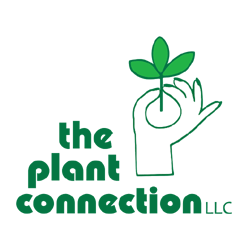Benefits Of Plants In the Workplace
There has been much talk about the suspected benefits of plants in the workplace. We know plants to filter the air we breathe putting more oxygen into the air. Many studies have been done on this topic which prove that plants play a major role in how we think, feel, and do our jobs. There is still more to learn but it is increasing clear that plants play a positive role in both our physical health and mental well being. Plants in the workplace are beneficial for removing toxins and carcinogens making cleaner, more oxygenated air in a time where clean air levels are now monitored with regulations and by law, and the improved health and reduction of stress in employees. With all of these studies and new laws its no surprise so many owners, corporations, offices, and property managers turn to plants for the solution and what a beautiful one it is!
NASA or the National Aeronautics and Space Administration conducted a study with the ALCA, the Associated Landscape Contractors of America called the NASA Clean Air Study. The study was performed in collaboration in order to further understand and develop a system to purify and clean the air in space stations. The outcome of these studies confirmed what we already know about the photosynthesis of plants taking in carbon dioxide and releasing oxygen into the air but that they also play a role in reducing harmful toxic carcinogenic chemicals in the air by filtering out dangerous substances from the air such as benzene and dangerous cancer causing hydro carbons.{1}
The study done in a sealed space station like atmosphere had come up with at least one plant per 100 square feet of space for effective filtering of the air by plants on a space station as a guideline. This recommended ratio may differ in home and office scenarios where the air quality could be more polluted.{2}
In 1989 NASA published a list of plants that filter benzene, formaldehyde, and other carcinogens the most with exact figures and amounts as a part of their study. B.C. Wolverton also later published additional plants to the already existing lists.{3}{4}
The results of the top best benzene filtering plants were: English Ivy. Devil’s Ivy, Peace Lily, Chinese Evergreen (Aglaonema), Bamboo Palm, Variegated Snake Plant, Red-Edged Dracaena, Cornstalk Dracanea, Barberton Daisy, Florist’s Chrysanthemum, Aloe Vera, Janet Craig, and Warneckei.{3}{4}
The results of the top best formaldehyde reducing plants were: Dwarf Date Palm, Areca Palm, Boston Fern, Kimberley Queen Fern, English Ivy, Spider Plant, Devil’s Ivy, Peace Lily, Flamingo Lily, Chinese Evergreen, Bamboo Palm, Variegated Snake Plant, Heartleaf Philodendron, Elephant Ear Philodendron, Red-Edged Dracaena, Cornstalk Dracaena, Weeping Fig, Barberton Daisy, Florist’s Chrysanthemum, Rubber Plant, Aloe Vera, Janet Craig, Warneckei, and Banana.{3}{4}
The results of the plants best at reducing trichloroethylene in the air were: English Ivy, Peace Lily, Bamboo Palm, Variegated Snake Plant, Red-Edged Dracaena, Cornstalk Dracaena, Barberton Daisy, Florist’s Chrysanthemum, Janet Craig, and Warneckei.{3}{4}
The results of the the best plants for the removal and filtering of xylene and toluene were: Dwarf date Palm, Areca Palm, Boston Fern, Kimberely Queen Fern, English Ivy, Spider Plant, Devil’s Ivy, Peace Lily, Flamingo Lily, Bamboo Palm, Variegated Snake Plant, Red-Edged Dracaena, Weeping fig, Florist’s Chrysanthemum. Dendrobium Orchids, Dumb Canes, King of Hearts, and Moth Orchids.{3}{4}
The National Institute of Health (NIH) also published an article, J. Physiol Anthropol, in the Journal of Physiological Anthropology licensee BioMed Central in 2015 by Min-sun Lee, Juyoung Lee, Bum-Jin Park, and Yoshifumi Miyazaki on a test group of 24 males all around the age of 25 plus or minus 2 years and the goal of the experiment was to study the psychological and physiological benefits of indoor plants on humans.{5}
12 males were given a task interaction with first plants and then a computer task and the other 12 were given the computer task and then the transplanting task. The scale they used for rating was a self rating system called SDM or the Semantic Differential Method in which participants rated their feelings on a 1-7 scale on certain words or emotions in addition to measuring heart rate and blood pressure before and after the tasks. The results from the tests indicated that feelings during the computer task verses the transplanting task were very different and there was a significant reduction is stress in the transplanting task. All participants felt considerably more relaxed after the transplanting task. The participants felt more “soothed, comfortable, and natural” after the planting task, but after the computer task felt more “uncomfortable, awakened, and artificial” after the computer task. Blood pressure was overall significantly lower after the transplanting task. Conversely, the participants felt stressed when working on the computer tasks. The conclusion of the study was: “Our results suggest that active interaction with indoor plants can reduce physiological and psychological stress compared with mental work. This is accomplished through suppression of sympathetic nervous system activity and diastolic blood pressure and promotion of comfortable, soothed, natural feelings.”{5}
In conclusion, it seems there is no doubt that an environment filled with plants is not only better for the overall health of employees in an office setting as they oxygenate the room and remove harmful toxins from the air, but that plants are also better for the mental well being of employees with their ability to reduce stress in humans. With so many indoor plants to choose from you can create a healthier more harmonious environment for the whole team or office with a solution that looks great too!
References:
{1}{2}{3}BC Wolverton; WL Douglas; K Bounds (September 1989) Interior Landscape Plants for Indoor Air Pollution Abatement (Report) NASA NASA-TM-101766
{4}Wikipedia, NASA Clean Air Study https://en.m.wikipedia.org/wiki/NASA_Clean_Air_Study
{5}Min-sun Lee, Juyoung Lee, Bum-Jin Park, Yoshifumi Miyazaki; NIH National Institute of Health; Journal of Physiological Anthropology (April 28, 2015) https://www.ncbi.nlm.nih.gov/pmc/articles/PMC4419447/#!po=67.5000
